So, you’re thinking about breeding birds and you keep hearing the term double flight cage. It sounds fancy, but it’s really just a smart, spacious setup.
This can make or break your breeding experience. When I first started breeding birds, I underestimated how much space my feathered friends needed.
That was a big mistake. My pair gave me the side-eye daily until I got a cage that matched their personalities. Lesson learned.
If you’re serious about breeding or want your birds to live comfortably, a double flight cage is a must. It’s the gold standard. I’ve tried many cages myself—some great and some not-so-great.
I’ve rounded up the best options for you. Let’s dive into cages, breeding success, and why investing in the right home for your birds is one of the best decisions you’ll make.
Why Double Flight Cages Are a Game Changer
If you’ve ever looked at your birds flapping around in a small cage and thought, “Hmm, they don’t look too happy,” you’re probably right.
Birds need space. Breeding birds need even more. That’s where double flight cages come in.
Here’s why they’re awesome:
- More room to move: Birds can actually stretch their wings without bumping into the bars every two seconds.
- Perfect for pairs: Breeding birds get their own space while still being close enough for bonding.
- Health boost: Extra space equals less stress, and less stress means healthier, happier birds.
- Flexibility: Many double flight cages have dividers. You can keep pairs together or separate them when needed.
Honestly, once you go big, you’ll never go back.
What to Look For in the Best Double Flight Cage
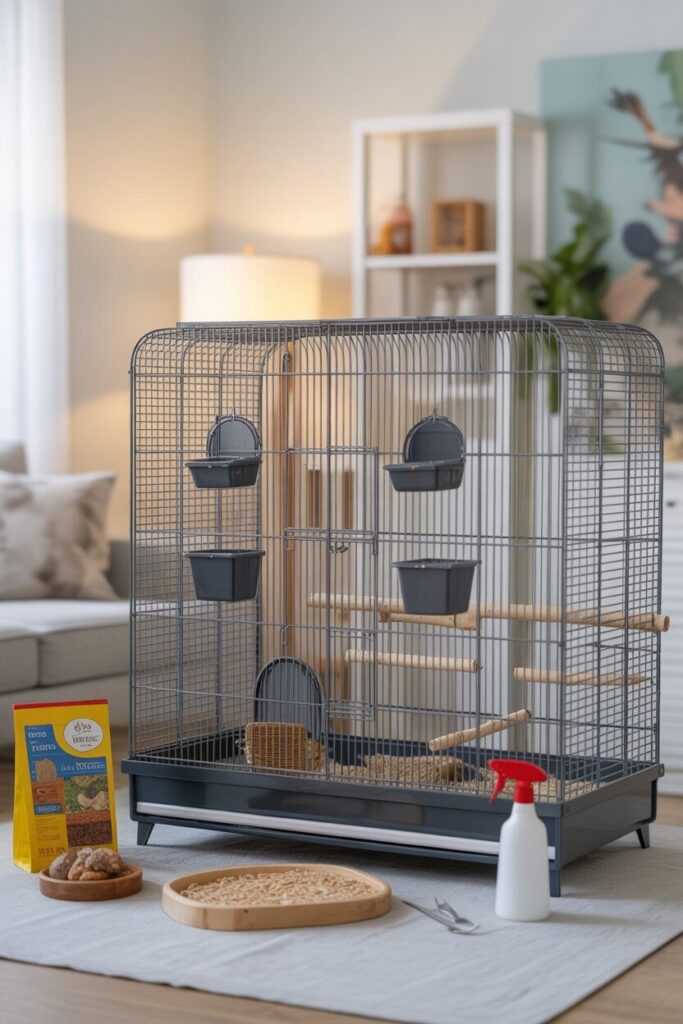
Okay, so not all cages are created equal. Some are built like tanks, while others feel like they’ll collapse if your parakeet sneezes too hard. Here are the features I always check:
1. Size
This is the deal-breaker. If it’s too small, your birds will resent you forever. Look for at least 60 inches in length if you’re serious about breeding.
2. Bar Spacing
Keep it safe. Half an inch spacing works for small birds like parakeets, finches, and canaries. For medium birds like cockatiels, 5/8 to 3/4 inch is fine. Too wide, and you’ll have escape artists on your hands.
3. Divider Option
A solid or wire divider is a lifesaver. You can separate pairs when needed without buying another cage.
4. Accessibility
Breeding involves frequent cage cleaning, food refills, and egg checks. If the doors are tiny or awkward, you’ll regret it fast. Go for cages with large swing-out doors.
5. Build Quality
Powder-coated metal beats flimsy wire every time. You don’t want your birds chewing through paint or the cage rusting in a month.
My Top Picks: Best Double Flight Cages for Breeding Birds
Here’s the part you’ve been waiting for. I’ve tested, borrowed, and obsessed over these cages, so I can give you the real deal.
1. Prevue Hendryx Wrought Iron Double Flight Cage
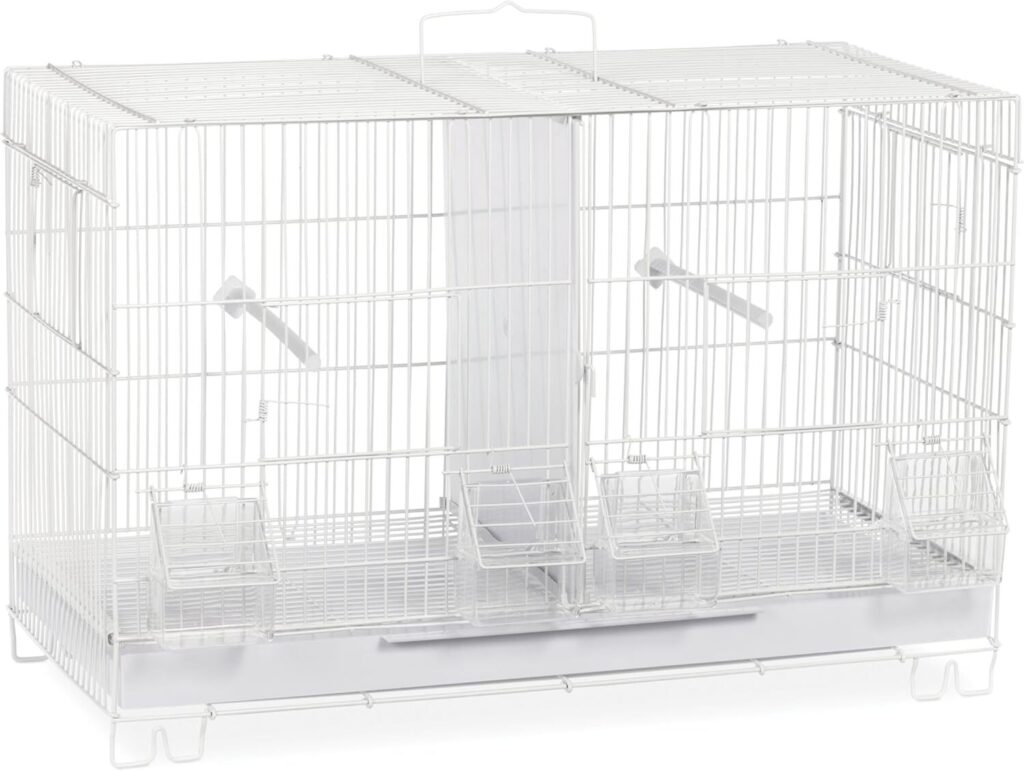
This one’s a classic for a reason.
- Size: 64 x 37 x 20 inches
- Bar spacing: 1/2 inch
- Divider: Removable
- Perks: Four feeding doors, slide-out trays for easy cleaning, and wheels for moving it around.
I love how sturdy this cage feels. My parakeets thrived in it, and honestly, I did too because cleaning it wasn’t a nightmare. The removable divider is perfect when your breeding pair needs a little “break.”
Best for: Small birds like budgies, finches, and lovebirds.
2. Yaheetech Double Large Bird Cage
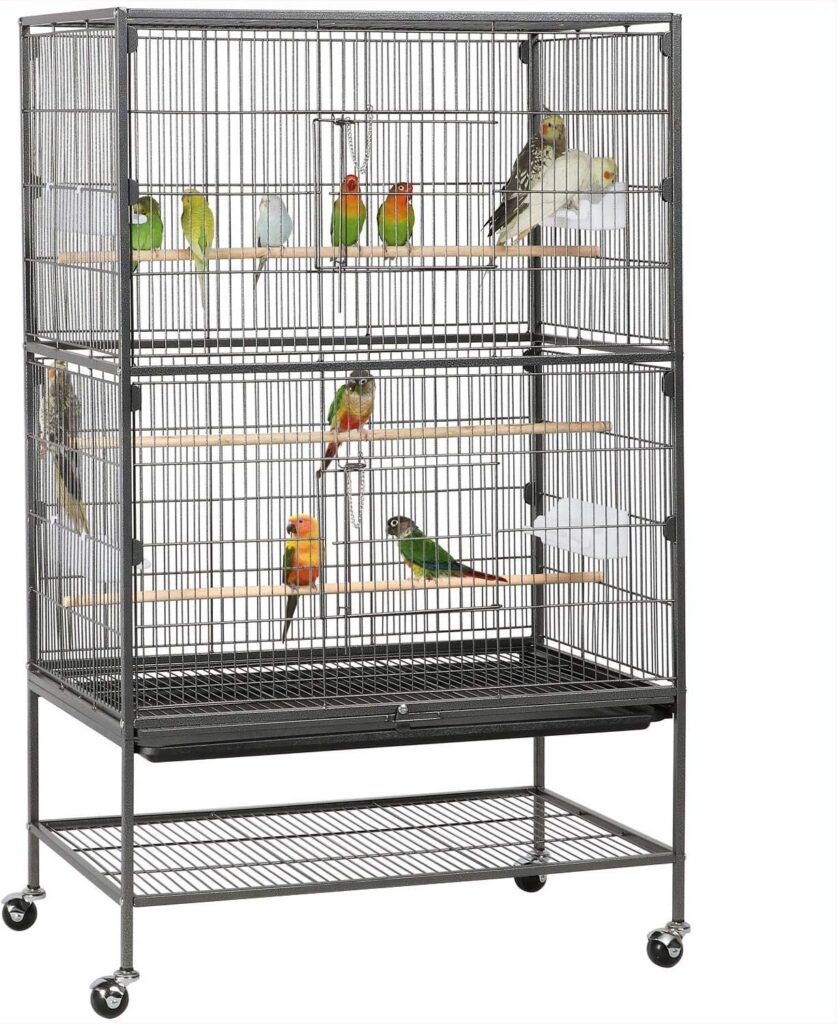
If you want something roomy without blowing your budget, this one delivers.
- Size: 53 x 37 x 18 inches
- Bar spacing: 1/2 inch
- Divider: Yes
- Perks: Rolling stand, large front doors, and multiple feeding stations.
I tried this with a pair of cockatiels, and they loved the space. The only thing I wasn’t thrilled about was the paint job. It held up fine, but I kept a close eye on it to make sure there was no chipping.
Best for: Breeders who want affordability and space.
3. Mcage Double Flight Cage
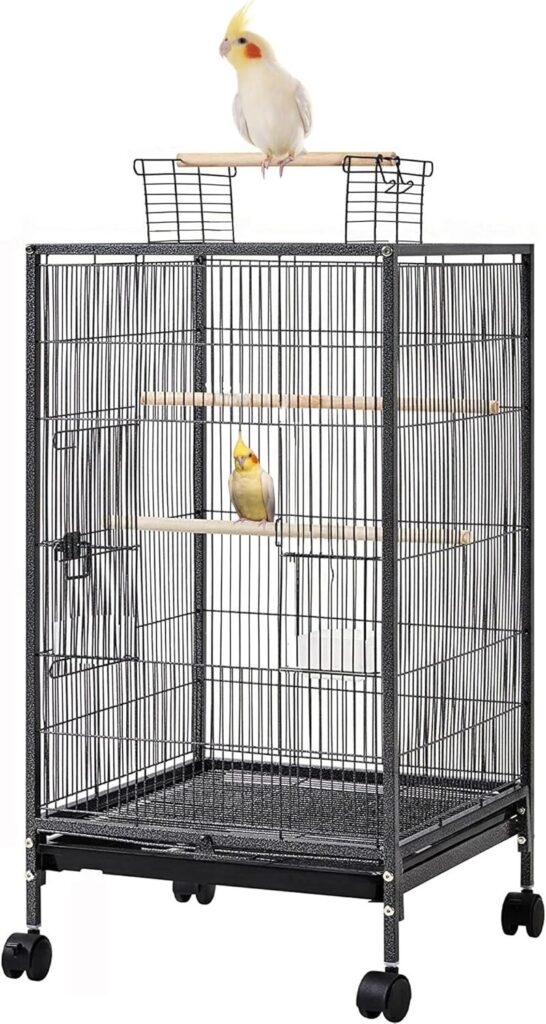
This one is like the “starter pack” for breeders who don’t want to commit to something huge yet.
- Size: 60 x 36 x 18 inches
- Bar spacing: 1/2 inch
- Divider: Removable
- Perks: Simple design, pull-out trays, and good ventilation.
I’ll be real here: it’s not the most stylish cage, but your birds won’t care about that. It does the job. And sometimes that’s all you need.
Best for: Beginner breeders.
4. A&E Double Flight Cage with Divider
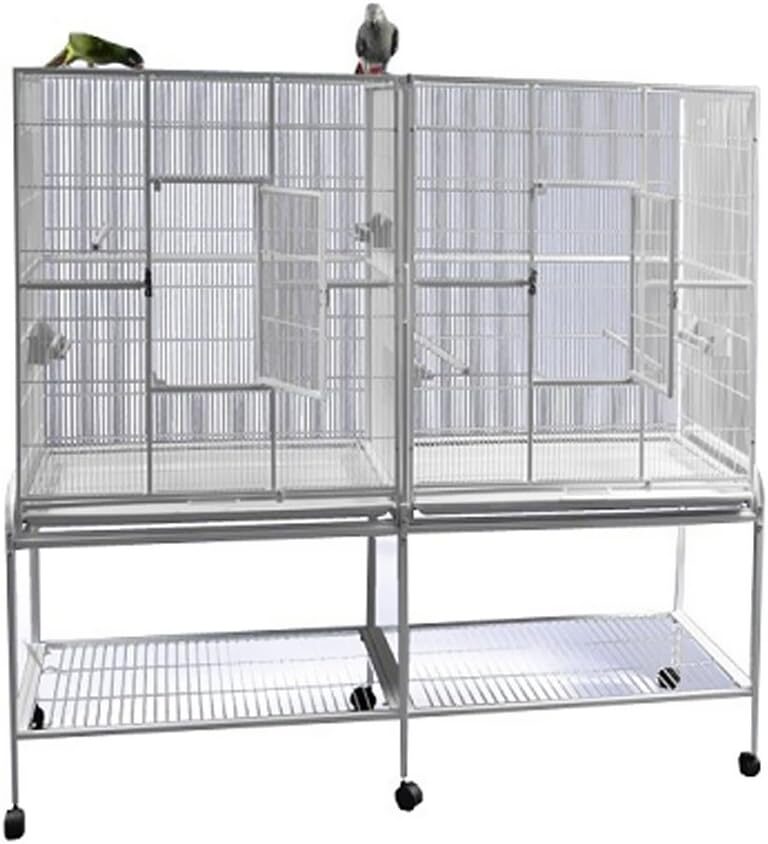
This is a tank. Heavy-duty, built to last, and worth the price if you’re in it for the long haul.
- Size: 64 x 40 x 20 inches
- Bar spacing: 1/2 inch
- Divider: Solid
- Perks: Superior durability, deep trays, and escape-proof locks.
I borrowed this cage from a friend, and I almost didn’t give it back. It’s pricey, but if you’re breeding multiple pairs over the years, you’ll never regret it.
Best for: Serious breeders.
Setting Up Your Double Flight Cage for Breeding
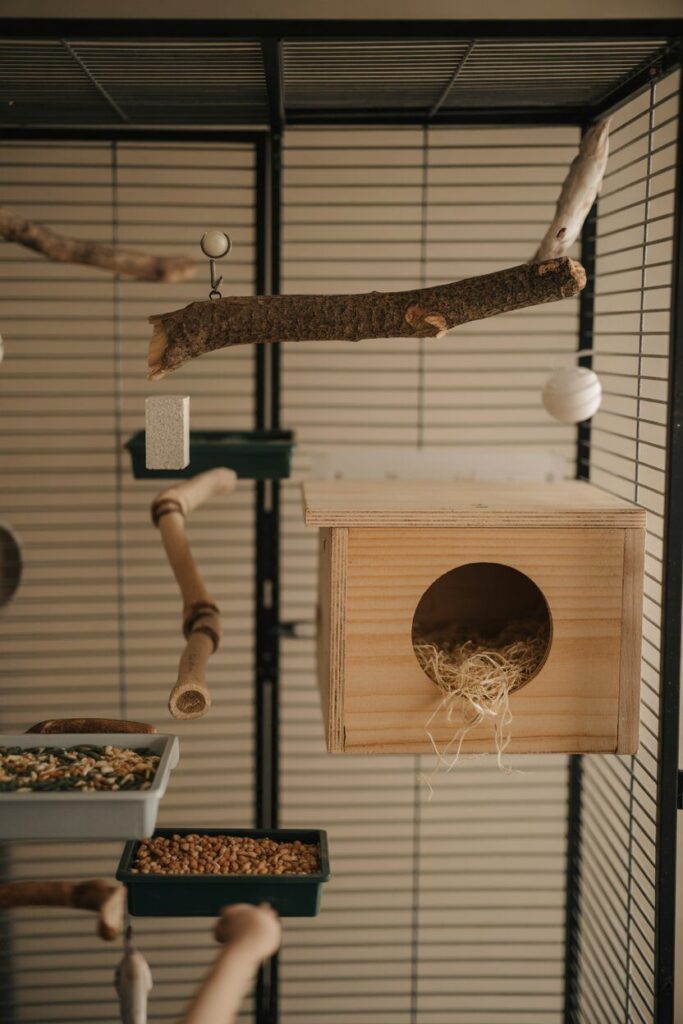
Buying the cage is just step one. Setting it up properly is where the magic happens. Here’s how I do it:
- Nesting boxes: Attach them securely. Make sure they’re easy to access for egg checks.
- Perches: Add natural wood perches at different heights. Don’t overdo it or you’ll clutter the space.
- Toys: Keep it simple. A couple of swings or chew toys are fine, but don’t turn it into a theme park.
- Food and water: Place bowls near doors for easy refills. You’ll thank me later.
- Lighting: Natural light is best, but you can use full-spectrum bulbs if needed.
A well-organized cage makes breeding smoother for you and way less stressful for your birds.
Mistakes to Avoid When Choosing a Double Flight Cage
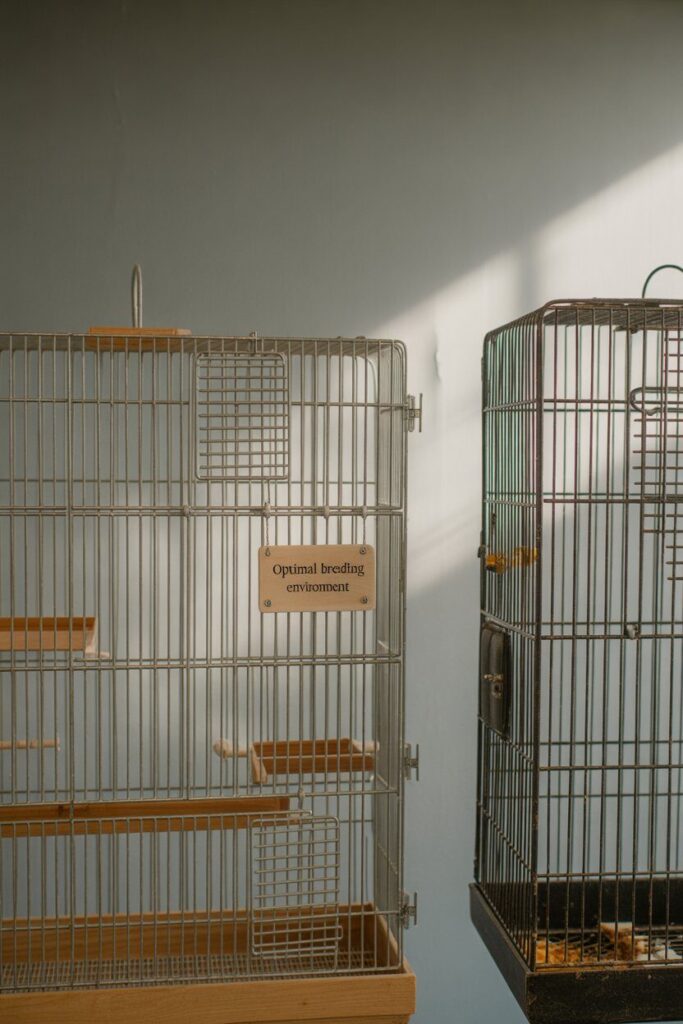
Let me save you from the headaches I went through:
- Going too small: Don’t cheap out. Your birds will hate it and breeding won’t go well.
- Ignoring bar spacing: Too wide and you risk injuries or escapes.
- Choosing style over function: A pretty cage that’s impossible to clean is not worth it.
- Skipping the divider option: Trust me, you’ll want that divider when your pair gets moody.
- Not checking reviews: If other breeders are complaining about rust or flimsy doors, believe them.
Why Investing in the Best Double Flight Cage Pays Off
Here’s the thing: breeding birds isn’t just about getting chicks. It’s about giving your pair the best possible environment to thrive.
A cramped, poorly designed cage equals stress, aggression, and failed breeding attempts. A proper double flight cage? That’s your ticket to happy birds and a successful breeding season.
And let’s be honest: watching your birds thrive in a spacious, comfortable cage just feels good. It’s like when you finally upgrade from a tiny apartment to a house with a yard. Total game changer.
Final Thoughts
So, there you have it: the best double flight cages for breeding birds, plus a little wisdom from someone who’s made the mistakes so you don’t have to.
If you want healthy, happy birds and a smoother breeding process, don’t skimp on the cage.
Pick the one that fits your budget and your space, but make sure it’s got the right size, bar spacing, and a divider option. Your birds will thank you, and you’ll thank yourself when breeding season rolls around.
At the end of the day, a cage isn’t just a cage. It’s the foundation of your birds’ health, happiness, and success as breeders. Get the right one, set it up smartly, and enjoy the journey.
What Makes a Double Flight Cage Ideal for Breeding Birds?
A double flight cage gives breeding birds the space they need for exercise, bonding, and nesting. Its larger design reduces stress and lets pairs interact naturally.
Many models have a removable divider, which is crucial for separating pairs when needed.
In contrast to smaller cages, a double flight cage supports long-term comfort and breeding success.
The extra room promotes healthy behavior and helps avoid problems like aggression, feather plucking, or failed breeding attempts.
How Big Should a Cage Be for Breeding Pairs?
Size is a key factor when choosing a breeding cage. For small to medium birds, a cage should be at least 60 inches long.
This size allows them to stretch their wings, hop between perches, and move freely without bumping into things.
A larger cage usually leads to better outcomes. Birds in spacious cages tend to be healthier, less aggressive, and more successful at raising their young.
Can I Breed Different Bird Species in the Same Cage?
In general, housing different bird species in the same cage is not advisable. Each species has unique needs, behaviors, and temperaments. Mixing them can cause stress, competition, or even aggression.
If you plan to breed more than one species, use separate double flight cages. This gives each pair the space and environment they need for safe and successful breeding.
What Features Should I Look for in the Best Double Flight Cage?
The key features to consider are size, proper bar spacing, and a removable divider. Good accessibility through large doors makes feeding and cleaning easier.
A sturdy, powder-coated build is vital; flimsy cages won’t hold up with active breeding pairs.
Other useful features include multiple feeding stations, easy-to-clean trays, and wheels for mobility. These details make your daily routine smoother and enhance the birds’ overall experience.
Do Double Flight Cages Work for Non-Breeding Birds Too?
Yes, absolutely. A double flight cage is great, even if you don’t breed birds. It offers a healthier and happier space. Birds need room to fly, play with toys, and exercise.
If you have multiple birds or want to improve your pet’s life, a double flight cage is a wise choice. It lowers stress and simplifies daily care, whether or not breeding is your goal.
